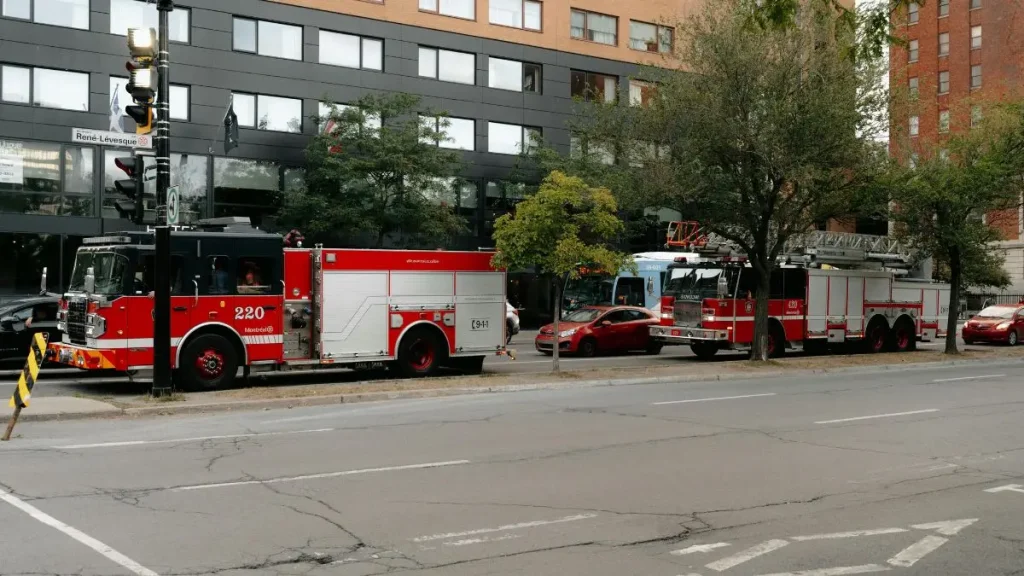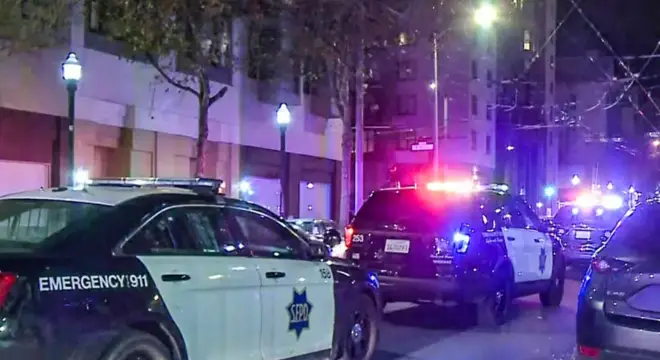One Person Displaced After House Fire Engulfs Adams County Home
I’m reporting from the dispatch details: just after 1:20 a.m. Thursday, a two-story single-family home on Waynesboro Pike in Liberty Township was found fully engulfed when crews arrived. Firefighters — led by Fairfield Fire & EMS and supported by more than two dozen tankers and engines — worked the scene until the blaze was under control around 3:38 a.m., and crews cleared the area just before 6 a.m.
Nobody was injured, but one person was left without a home; the American Red Cross was called in to help. Waynesboro Pike was closed between Orchard and Tract roads while crews battled the fire. At this point officials say the cause remains under investigation.
I’m writing this so you get more than the basic dispatch facts you’ve already seen online. Later in the piece I’ll break down the response scale, what investigators typically look for, practical safety steps you can take tonight, and how neighbors can support someone who’s been displaced.
Flames Engulf Two-Story Home on Waynesboro Pike

When I went through the reports, one detail stood out — the speed. The fire was called in around 1:20 a.m., and by the time the first crews reached Waynesboro Pike, the entire two-story home was already swallowed in flames. It’s one of those moments firefighters describe as “fully involved” — meaning there’s no safe way inside, only a fight to contain.
Local21News noted that the house sat along the quiet stretch between Orchard Road and Tract Road, near the Maryland border. That’s a rural pocket of Liberty Township where homes are spaced far apart, so when a fire breaks out in the middle of the night, visibility and response time matter even more.
If you live nearby, you probably saw the flashing reds lighting up the sky before dawn. For residents, it wasn’t just another headline — it was a reminder of how fast an ordinary night can change.
Massive Firefighting Response — Two Dozen Units on Scene
More than two dozen tankers and engines were called in, a scale you don’t often see for a single-family home. That kind of turnout means multiple volunteer departments pulled together before sunrise. Fairfield Fire and EMS led the charge, coordinating water supply runs and rotation crews through the night.
Dispatch logs show the fire was finally brought under control by 3:38 a.m. — roughly two hours of nonstop work — and the road didn’t reopen until nearly 6 a.m.
It’s easy to skim past those numbers, but think about it: that’s a dozen local firefighters missing sleep, working in freezing pre-dawn air, making sure the flames didn’t jump to nearby trees or power lines.
I’ve covered enough fires to know — coordination like that saves whole neighborhoods.
Similar overnight responses were seen recently in North Reading, where a home erupted in flames twice within 24 hours — another case that showed how critical coordination and manpower can be during fast-moving fires.
Resident Displaced, No Injuries Reported
Thankfully, everyone made it out. When dispatchers first took the call, they worried someone might still be trapped inside. Moments later, crews confirmed that everyone was safe — a rare bit of relief in a fire of this size.
The American Red Cross was called to assist one displaced resident, helping with temporary housing and essentials. No injuries were reported, and that’s worth pausing on. A fire that intense, at that hour, often ends differently.
If you’ve ever been through an emergency evacuation, you know how disorienting it can be — one minute you’re half-asleep, the next you’re watching your home burn from the yard. That’s what this person faced.
So even though the headlines will say “no injuries,” there’s still loss — of space, security, and memory — that never shows in a dispatch log.
Earlier, a New York home fire displaced three residents and injured two firefighters — another reminder of how unpredictable these incidents can be even for trained crews.
Cause Under Investigation — What Officials Know So Far

Investigators haven’t said yet what caused the blaze. That’s common within the first 24–48 hours — they have to wait until the site cools before they can safely search for ignition clues.
If you’re wondering what they’ll look for, it’s usually a mix of electrical wiring, heating equipment, or unattended appliances. According to the National Fire Protection Association, home heating fires spike in winter months, especially in early-morning hours when people are asleep and heaters run nonstop.
So while officials sort through the debris, the takeaway for the rest of us is simple: check your smoke alarms, keep space heaters at least three feet from anything flammable, and unplug devices before bed. Those habits seem small — until they’re the reason you get to wake up tomorrow.
Road Closures and Local Disruption
For a few hours that morning, Waynesboro Pike was shut down between Orchard Road and Tract Road while tankers moved in and out. If you commute through that stretch, you probably hit detours or flashing barricades before dawn. Crews cleared the scene around 6 a.m., but by then, many early drivers had already turned back.
It’s the kind of brief disruption most of us forget by lunchtime — unless it’s your road, your neighbor, or your home behind the tape.
For Liberty Township, this fire wasn’t just a traffic note; it was a community jolt — a quiet reminder that emergencies don’t wait for daylight.
During events like this, real-time local alerts can make all the difference. Many residents now rely on verified community WhatsApp channels that share quick fire and safety updates — a useful way to stay informed before official reports arrive.
Why This Matters for Adams County Residents?
When you hear about a house fire in your county, it’s easy to file it under “someone else’s bad night.” But it rarely stays that distant. This blaze in Liberty Township is a real reminder of how fragile safety can be — and how fast a spark can turn into loss.
If you live in Adams County, you know how stretched volunteer fire crews are, especially in rural areas. It takes time to haul water, find hydrants, and coordinate trucks. That gap between the call and the first hose line can decide what’s left standing.
So here’s why this story matters to you: because fire safety isn’t just about alarms or drills — it’s about community readiness. If your neighbor’s home caught fire at 1 a.m., would they have someone to call? Would you know where your closest hydrant is? Those small checks can save lives long before the sirens arrive.
In another case from Pennsylvania, a Monroe home fire displaced six people and eight pets — proving how quickly a quiet night can turn into chaos.
Lessons from the Liberty Township Fire
Every fire leaves two stories behind: what was lost, and what can be learned.
From an expert lens — early-morning house fires are among the deadliest nationwide. According to the National Fire Protection Association, most fatal home fires happen between midnight and 6 a.m., when people are asleep and smoke spreads unnoticed.
If you take one thing away from this story, let it be this: test your smoke alarms tonight. Make sure your exits aren’t blocked, and that your space heater sits at least three feet away from furniture or curtains. These are boring little tasks — until they save a life.
And if you know someone who’s recently suffered a fire, don’t just say, “That’s awful.” Ask if they have somewhere to stay, if they need a charger, a blanket, or just a ride to the insurance office. Recovery starts with small acts like that.
I’ve covered fires for years, and the truth never changes — the loss is sudden, but safety is built quietly, one habit at a time.
So, what’s the first safety check you’ll do tonight? Let me know — because sometimes, stories like this only matter if they move us to act.
What’s Next?
Right now, investigators are waiting for the debris to cool so they can trace what started the fire. That process takes time — sometimes days — because every inch of the structure has to be examined before any cause is confirmed.
Fairfield Fire & EMS will likely release updates once the official report is complete. The American Red Cross continues to assist the displaced resident, helping with housing and recovery items.
If you live nearby, this is a good moment to double-check your own fire plan. Do your smoke alarms actually work? Do you know two ways out of every room? I’ve seen too many people realize the answer after the damage is done.
Stories like this aren’t just updates — they’re warnings in plain sight. If you learned something from this, share it. Sometimes awareness is the quiet difference between loss and safety.
For more verified home fire reports and safety insights, visit our Home Incidents section — new local stories are added daily.
Disclaimer: Information in this report is based on official updates and Local coverage at the time of writing. Details about the cause and damage may change as investigators release more findings. Readers are advised to check back for verified updates from local authorities.


